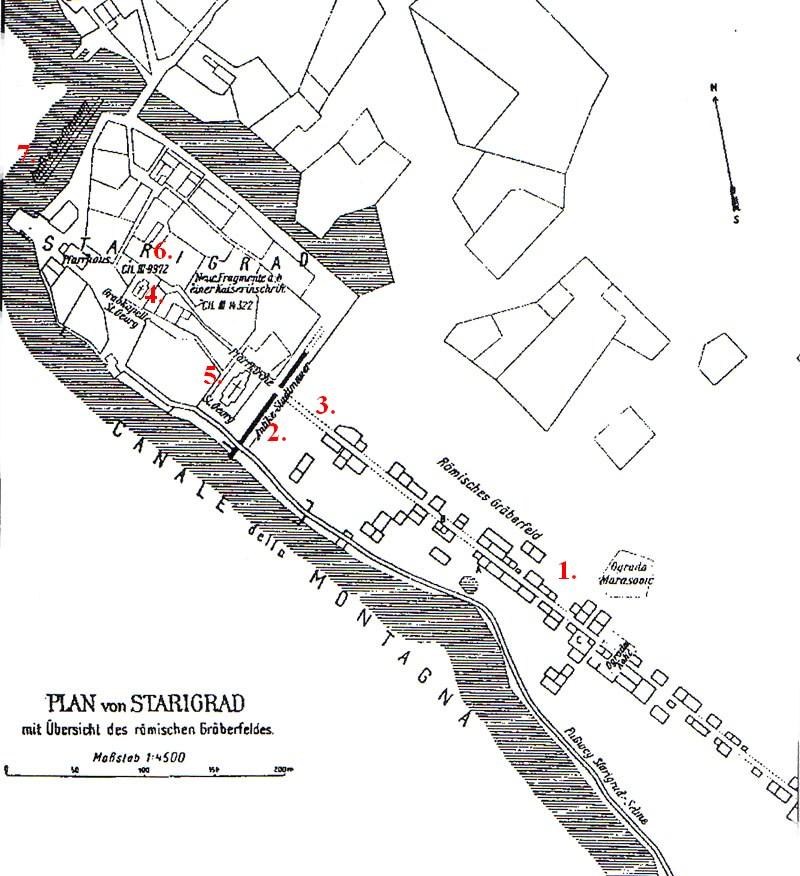The area of South Velebit has been inhabited since prehistoric times. It is believed that, during the last ice age, the area was probably inhabited by small groups of Paleolithic hunters/collectors, like elsewhere in the Mediterranean. The sea level must have been 120 meters lower than today at the time, and Velebit Channel was a wide valley with a river flowing through it. The highest parts of Velebit were covered with glaciers. When the sea level began to rise in the late ice age, people moved to higher, hilly areas. The earliest records of humans in Velebit – Mesolithic flint tools found in Vaganačka Cave under Veliko Rujno- date back to this era.
 For thousands of years, shepherds used Vaganacka Cave to shelter their herds. They left behind a four meters thick accumulation of soil and fragments of characteristically shaped pottery vessels.
For thousands of years, shepherds used Vaganacka Cave to shelter their herds. They left behind a four meters thick accumulation of soil and fragments of characteristically shaped pottery vessels.
Approximately eight thousand years ago, the first cattle breeders and farmers arrived in the area, bringing wheat, domestic goats and sheep, as well as the knowledge of their breeding. The hunting/collection activities soon lost its importance, and a shepherd life began on Velebit. Plenty of material evidence, such as bones of domestic animals, tools and equipment used by prehistoric shepherds and decorated clay tableware, was found in the caves that served as shelter for people and cattle.
Over the last two thousand years BC, during the Bronze Age, the first fortifications and stone wall buildings were erected. They could serve as shelter to the population from the surrounding villages in case of danger, and some of them may have been permanent settlements where the local rulers had their seats. In addition, they oversaw important cattle and trade routes leading to Velebit and further to Lika via Paklenica or Rujno. Some of them served to oversee navigation. They are now destroyed, but ring-shaped mounds up to several meters in height can still be seen in some places. In immediate vicinity of the fortifications, you can find casket heaps – deposits of large round stone under which former rulers were buried in casket made of stone tablets. Most of them have been dug out and the graves have been robbed, but they can still be spotted here and there, like in the area of the village of Ljubotić above Tribanj-Kruščica.
A prehistoric burial cairn
Over the last two thousand years before Christ, the east coast of the Adriatic was gradually conquered by the Roman legions. After the Roman Province of Dalmatia was founded in the early 1st century A.D., permanent Roman reign was established. Starigrad (Roman name: Argyruntum) was established at the time, and it soon developed into an important trading center. In the fourth century A.D., Emperor Tiberius had it fortified with walls and towers. The town cemetery was situated by the road that led southwest of the town. Plenty of archeological findings were collected from approximately 400 explored graves – jewelry, glassware and metalware, weapons and tools. The most interesting finding is certainly the ancient glass collection – as many as 146 vessels of different forms (bowls, glasses, bottled) – kept in the Zadar Museum of Archeology.
Peninsular location of Starigrad Paklenica at the start of the 20th century (ABRAMIĆ - COLANGO 1909).
The numbered locations are parts of the city from the antiquity period that were excavated in 1908 and some parts of the present-day city 1 Necropolis from the antiquity period, 2 and 7 Roman walls, 3 Roman road, 4 and 5Chapel and Church of Saint George, 6 Excavation location that contained epigraphical remains.
Life in Argyruntum came to a standstill in the early 4th century A.D. The era of peace was interrupted by attacks of barbaric nations that eventually led to the decline of the Roman state. In an attempt to bring the Adriatic coast back to Empire, East Roman Emperor Justinian built a system of fortifications to secure navigation and protect the local population. The ruins of forts and towers above Modrič and near Sveta Trojica not far from Tribanj are parts of this defensive system that briefly postponed the final decline of the ancient world in the Adriatic.
 Ancient glass from Argyruntum
Ancient glass from Argyruntum
 For thousands of years, shepherds used Vaganacka Cave to shelter their herds. They left behind a four meters thick accumulation of soil and fragments of characteristically shaped pottery vessels.
For thousands of years, shepherds used Vaganacka Cave to shelter their herds. They left behind a four meters thick accumulation of soil and fragments of characteristically shaped pottery vessels.

 Ancient glass from Argyruntum
Ancient glass from Argyruntum